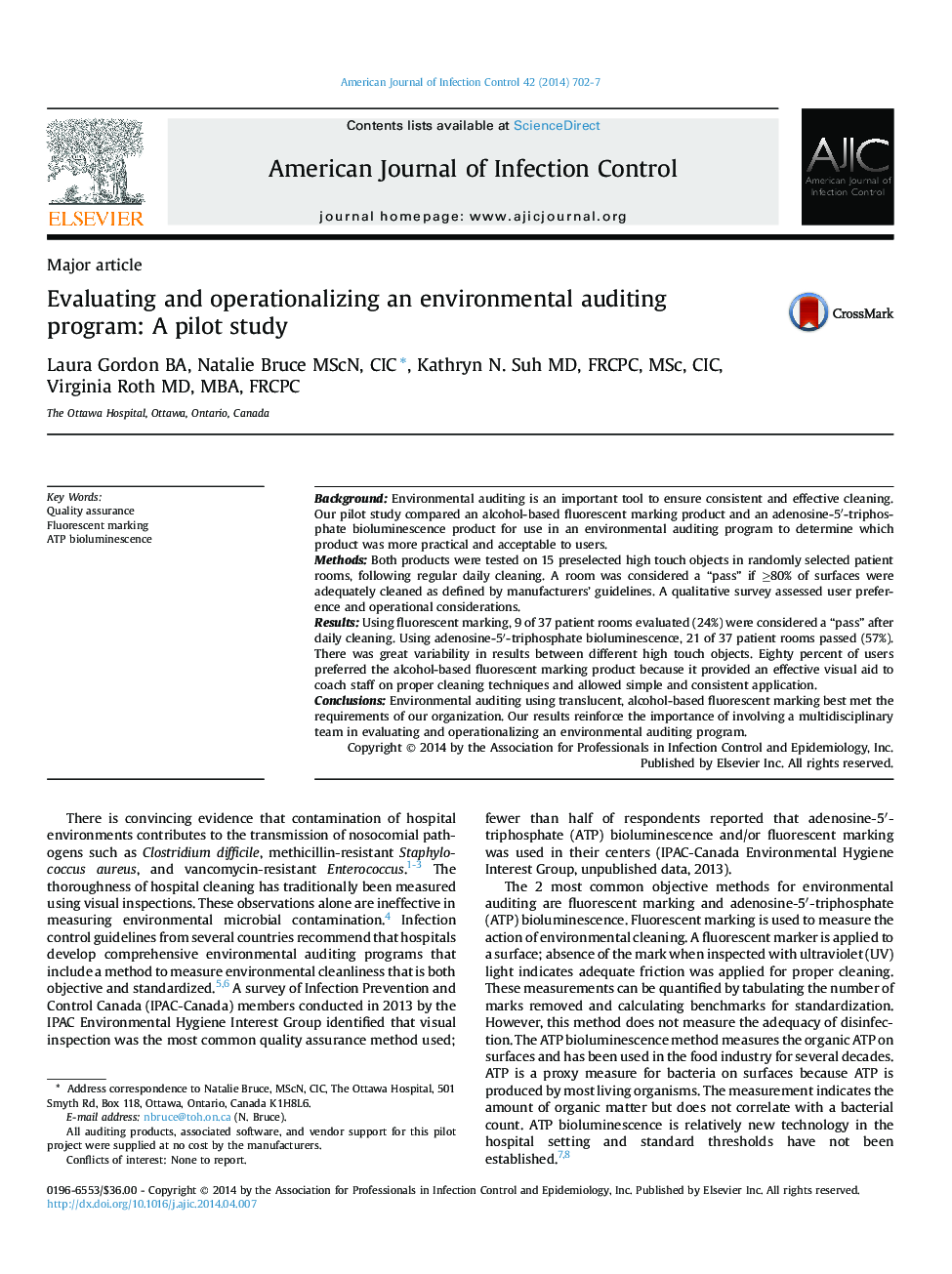| Article ID | Journal | Published Year | Pages | File Type |
|---|---|---|---|---|
| 2636958 | American Journal of Infection Control | 2014 | 6 Pages |
BackgroundEnvironmental auditing is an important tool to ensure consistent and effective cleaning. Our pilot study compared an alcohol-based fluorescent marking product and an adenosine-5′-triphosphate bioluminescence product for use in an environmental auditing program to determine which product was more practical and acceptable to users.MethodsBoth products were tested on 15 preselected high touch objects in randomly selected patient rooms, following regular daily cleaning. A room was considered a “pass” if ≥80% of surfaces were adequately cleaned as defined by manufacturers' guidelines. A qualitative survey assessed user preference and operational considerations.ResultsUsing fluorescent marking, 9 of 37 patient rooms evaluated (24%) were considered a “pass” after daily cleaning. Using adenosine-5′-triphosphate bioluminescence, 21 of 37 patient rooms passed (57%). There was great variability in results between different high touch objects. Eighty percent of users preferred the alcohol-based fluorescent marking product because it provided an effective visual aid to coach staff on proper cleaning techniques and allowed simple and consistent application.ConclusionsEnvironmental auditing using translucent, alcohol-based fluorescent marking best met the requirements of our organization. Our results reinforce the importance of involving a multidisciplinary team in evaluating and operationalizing an environmental auditing program.
